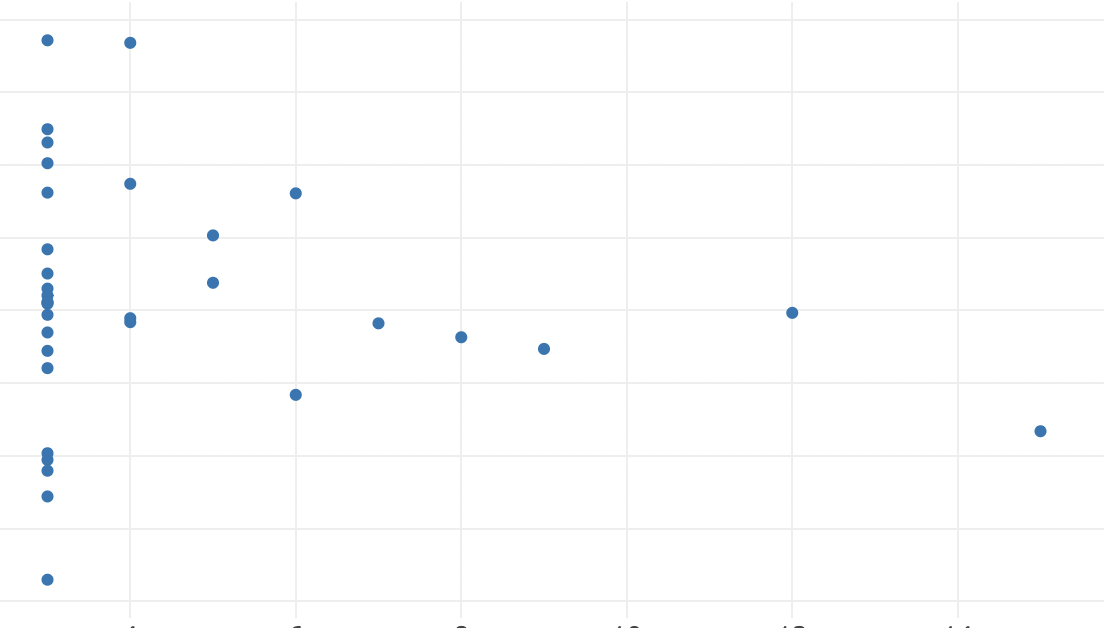I keep banging on about the importance of magnitude in determining how elections work. The number of councillors elected for each ward at the NSW council election has a major influence on each council’s party system and how votes translate into seats. Indeed the voting system has an influence on which parties run and how well they poll, and thus seats have an influence on votes, not just the other way around.
In this post I’ve pulled together data on the relationship between votes cast and the number of seats won for each political party in 34 councils which are dominated by political parties. I find that the magnitude has a big influence on proportionality – higher magnitudes tend to result in better proportionality. Lower magnitudes sometimes produce proportional results but can also produce very disproportionate results. And I’ll focus on a few interesting cases where the seats-votes relationship was particularly weak.
This dataset consists of 34 councils, a relatively small share of the state’s councils, but they make up about 73% of the total votes cast in December. I’ve included every council where less than 50% of the vote was cast for independents. That includes 23 of the 24 big councils I’ve analysed, as well as Blue Mountains, Burwood, Canada Bay, Cessnock, Hawkesbury, Lane Cove, Maitland, Port Stephens, Strathfield, Waverley and Woollahra. It includes every council in Sydney outside of a block of four north shore councils (Ku-ring-gai, Mosman, North Sydney and Willoughby) and Wollondilly in the far south-west. It also now covers a solid block of five Hunter area councils.
There’s not much point trying to analyse proportionality when a council is dominated by independents. It’s crucial you can identify groups that exist across the council, particularly when a council is split into multiple wards.
I’ve had to lump together all of the independents as one group which is not ideal, since they are not actually running as a team. This is why I’ve tried to limit the impact by not looking at councils with particularly high independent votes. I have ignored mayoral elections.
I’ve calculated proportionality using the Gallagher index which calculates how much the seat results deviate from pure proportionality. The index produces a score between 0 (perfectly proportional) to 100 (not at all proportional).
To give some examples also used on the Wikipedia page listed above, the famously disproportionate landslide victory for the Queensland Liberal National Party in 2012 produced a very high score of 31. The 2010 federal election, in contrast, had a score of 11.3.
This chart plots each council’s 2021 Gallagher index against the number of seats elected per ward (magnitude).
A majority of these councils have a magnitude of 3. It’s the most common magnitude for a warded council, and most common in urban areas.
There is a variety of proportionalities amongst the magnitude-3 councils. Camden’s result was almost perfect, while Blue Mountains, Port Stephens, Woollahra and Cumberland also did pretty well.
But most of the least proportional results were also magnitude-3.
Lane Cove had a score of 15.4. Labor polled just 23%, with the Liberal Party on 31%, trailing the independents on 40.5%, yet Labor and the Liberal Party each managed 3/9 council seats, with just two independents.
Inner West had the third-worst proportionality, with a score of 12.98. Labor outpolled the Greens by just 2.5%, but managed a majority of seats while the Greens won just one third of seats. Newcastle, Blacktown and Canterbury-Bankstown weren’t far behind.
Magnitude-4 councils aren’t as common, but didn’t really do any better than magnitude-3. I’ve talked about the problems with even-numbered electorates before, and how it tends to produce deadlocks even when the vote is quite different.
Two of the four magnitude-4 councils in this sample ranked in the top five for disproportionality, while the other two (Shoalhaven and Wollongong) ranked somewhere in the middle. None of them performed particularly well.
Ryde was the second-worst council in this analysis, just behind Ryde on 15.36. Labor and the Liberal Party almost perfectly tied on the vote, both between 35% and 36% with Labor leading by 0.7%. This translated into 41.7% of seats for Labor and 50% of seats for Liberal, while the independents were underrepresented and the Greens won no seats at all.
Lake Macquarie was also very disproportionate. Labor translated 39.2% into half of all seats.
As magnitudes increase, proportionality tends to improve, but there is some variety. The magnitude-6 Burwood council did surprisingly poorly.
Campbelltown had a score of 4.7 which is pretty good but not amazing for a magnitude-15 council.
Magnitude is not the only factor that influences proportionality – another factor I haven’t analysed is the total size of the council. A magnitude-5 council with 15 councillors won’t be as proportional as one with 25 or 35 councillors. And NSW law caps councils as just 15 seats, so none of them will be consistently as proportional as a 100-seat parliament could be. But that’s a story for another time.



